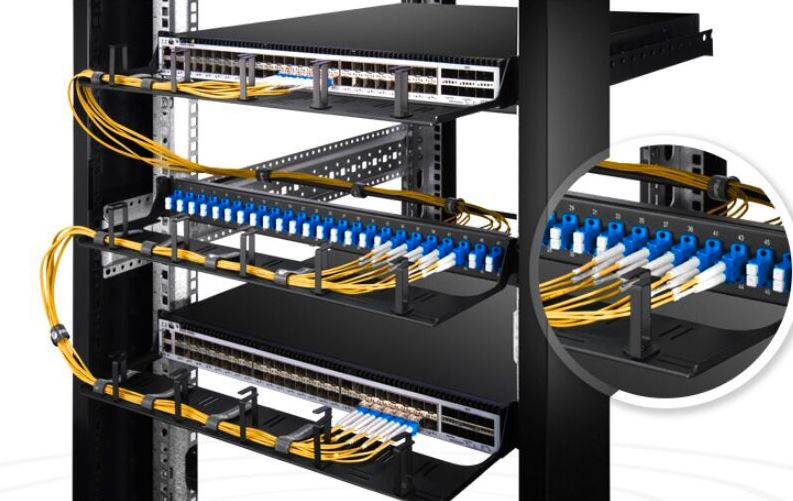Proper network management is quite crucial to enjoying a smooth, speedy, and hassle-free network connection. Just using the right cable is not enough to make the connection smooth and speedy. It has many other network equipment needs that play their distinctive role in improving the end results. One such piece of equipment is fiber optic patch panels.
Fiber optic patch panels, commonly known as fiber distribution panels, are the equipment used to terminate the cables and ensure connection transmission to individual cable fibers. It is essential to remove the distractions and hurdles in network transmission. It is specifically used in data centers. Developed countries like the UAE are now completely dependent on the use of fiber optics and patch panels, which makes their network system one of the best in the world.
Keep scrolling down this article to explore a brief guide about fiber optic patch panels.
Major Functions of Patch Panels
Here are the three major functions of the patch panels which ensure smooth network performance.
- The enclosure of patch cord connections
- Storage of spliced fiber optics
- High-density cable management
Common Components of Fiber Patch Panels
Fiber patch panels do not consist of a single unit. Here are the common components of fiber patch panels, which are included in every termination unit.
- Enclosed chamber
- Coupler panels
- Connector couplers
- Splice tray
Types of Patch Panels
Fiber optic patch panels are available in a wide variety, according to the type of cable and network need. Here are some of the most common types of patch panels from which you can easily opt according to your need and requirement.
- Rackmount fiber patch panel
- Wall mount fiber patch panel
- An indoor fiber patch panel
- An outdoor fiber patch panel
- A loaded fiber patch panel
- An unloaded fiber patch panel
- Fiber patch panel with splice tray
- Fiber patch panel with port numbers
- Removable lid fiber patch panel
- A slide-out fiber patch panel
Top 4 Tips to Buy the Perfect Fiber Optic Patch Panel
Ensuring a smooth and efficient network installation is not easy. You have to plan, design, and implement the network to ensure it does not break down or require frequent maintenance. Most importantly, you have to pay attention to the related equipment and parts used in the installation process, as they can significantly impact the quality of the network. Therefore, it is quite important to buy the perfect fiber optic patch panel and save yourself from additional expenses and loss.
Here are the top tips for buying the perfect fiber optic patch panel.
1. Check the Patch Panel Size
The first point you need to consider to buy the perfect fiber optic patch panel is its size. Check its height, width, depth, and weight before selecting it. Another important point you need to consider for futuristic growth is using a little bit bigger fiber optic patch panel. A bigger size patch panel will accommodate your network expansion without having to make the extra investment.
Most of the users get confused while picking the bigger patch panels and prefer to acquire the help of professional fiber optic companies in Dubai to select patch panels of the right size and ensure their professional installation.
2. Consider Port Density
The second tip to buying the perfect fiber optic patch panel is to consider the port density. The higher the density of the port, the more individual connections it can support. A normal fiber optic patch panel of 1U can support a port density of up to 48 ports. The same with a higher density can support up to ninety-six ports.
The data center usually requires fiber optic patch panels with higher density. So, consider your need. You might need an upgrade in the near future. Make your decision wisely, keeping in view all such little details and requirements.
3. Check if it is Loaded or Unloaded
The next tip to buy the right fiber optic patch panel is to check if it is loaded or unloaded. The loaded fiber optic patch panel is the one that has pre-installed fiber adapter panels or cassettes.
On the other hand, the unloaded fiber patch panel is the one that does not have these preinstalled features. The loaded ones can limit your cost, as well as the time of installation, so pick the right one according to your need.
4. Consider your Budget
The last tip to consider while buying a fiber optic patch panel is to consider your budget. Do not idealize the futuristic needs and go overboard in terms of your budget. On the other hand, do not neglect the obvious needs and try to save your budget. You can also consult the professionals from fiber-optic companies and ensure to get the best equipment in your budget and ensure its hassle-free installation.
Choose the right fiber optic patch panel to enjoy a smooth connection!
The right fiber patch panel is the key to a smooth and reliable network connection. You need to pay attention to the whole network planning and installation process to achieve this goal. However, if you are not much familiar with technicalities, consult professional telecom companies and enjoy expert dealing from the start till the end.

